Photographers lusting for a full-frame, multi-megapixel digital SLR at an "affordable" price will have to wait just a little longer now, with Kodak's announcement today that they're pushing the scheduled availability of the DCS Pro 14n off another month, to mid-February.
While I'm sure that they're going to take some heavy flak on internet discussion forums for this, I left a conversation with Kodak manager Jay Kelbley today feeling somewhat reassured that the much-awaited release of the 14n is actually more on track than I'd feared/suspected. Limited-function demo units (not suitable for review, unfortunately) are about to be released to Kodak field staff, and hardware production has evidently finally begun in earnest. There still appears to be a good bit of work remaining to be done on the camera's firmware, and the Kodak Photo Desk software to support it, but the fact that full hardware production has begun is very good news.
As to the reasons for the protracted delay, Kodak declined to comment specifically. When I asked whether there had been a sensor problem, the response was "not really." (Which somehow sounded slightly equivocal to me.) Kodak's standard response to queries over schedule slips has been to describe the camera as "incredibly innovative," pointing to the fact that it's really an entirely new beast with relatively little in common with previous DCS digicams.
I won't speculate further on possible causes for the schedule slip, but it does seem that Kodak feels that they've gotten a handle on whatever the issues were, at least to the extent that they feel comfortable moving forward with full hardware production.
As proof that there really *is* a camera behind the press releases, Kodak has now posted a number of sample images from the prototype models on their website, and also shared a couple of other shots with me, to in turn share with you here.
The first four thumbnails below link to download pages on the Kodak site, where you can pull down copies of the original files for yourself. The last two link to original jpeg files on the IR server, as received from Kodak.
| Sample images from Kodak's Site (Click to go to download page) |
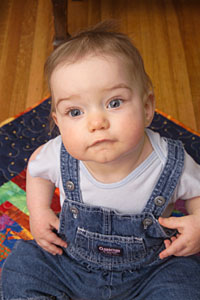 | 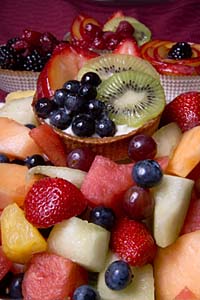 |
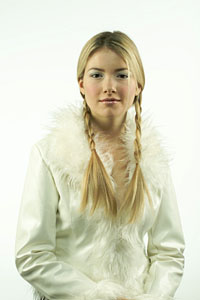 | 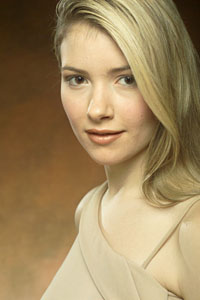 |
(I've removed the rather sub-grade images from Kodak that formerly appeared in this space. - See my my more recent news article for a much better-looking sample image and some examples of how the noise-reduction settings affect image quality.)I'd caution readers to not place too much weight on the quality of these images, as Kodak has made clear that they're still actively tweaking the camera's firmware. It does indeed seem that they have a ways to go with the product, as the photos posted on the Kodak site show evidence of significant sensor noise, with fairly aggressive noise-reduction processing to cope with it. The shots below are cropped from two of the images posted on Kodak's site, the one on the left from the "low key" portrait of the girl, the one on the right from the still-life shot of the fruit. Below each shot, you'll find my observations regarding sensor noise and the noise-reduction processing that's being applied.
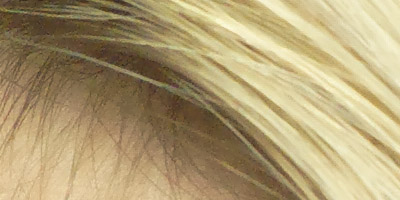 |
In this shot, we can see two things - The great resolving power of the 14n's sensor, as seen in the individual strands of hair, as well as the effect of the noise-reduction processing, in the relatively flat-toned areas of the model's hair. This is a common approach to noise reduction in digicams, basically "flattening" the image detail in areas of low subject contrast. (Where noise would be most apparent.) The technique does indeed do a good job of making the image noise less apparent, but as you can see here, it can also mask subtle subject detail as well. (By the way, both this crop and the one below were extracted from the TIFF file that Kodak posted, not a JPEG. - So any flattening of the image detail is the result of noise-reduction processing, not JPEG compression artifacts.) |
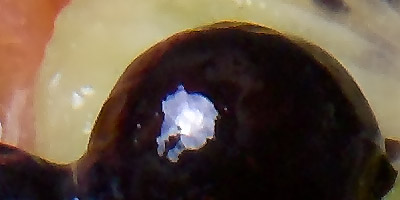 |
In this crop, you can see some of what's going on with the noise-suppression algorithm. In areas of low local contrast, the image appears very smooth, really artificially so. When you come to an edge between two contrasting objects though, things get a lot more crisp, as well as more noisy. - Note the band of increased image noise immediately adjacent to the boundary between the blueberry and kiwi fruit. |
Having previously cautioned all of you against looking at the 14n's sample images too closely, I of course immediately went and did that very thing myself. I did so to point out an issue that's bound to be discussed online, if for nothing else than to say that it would be wise to withhold judgement about the camera until I can get my hands on a true production-level model and run it through some well-controlled tests. (The same goes for color, which to my eye isn't yet nearly up to Kodak's usual standards.) One of the strengths of the architecture used by Kodak in their professional-level products is that the signal-processing chain is exceptionally malleable, permitting even drastic reworkings of the image processing to be done entirely through firmware.
The bottom line at present is to stay tuned, and see what the final shipping models look like...
(One thing that I *can* safely predict at this point though, is that the 14N will almost certainly be in short supply when it first ships. If you think you even *might* be interested in one, it would be wise to get in line for it early. - Follow this link to place a pre-order with our preferred affiliate, Ritzcamera.com.)